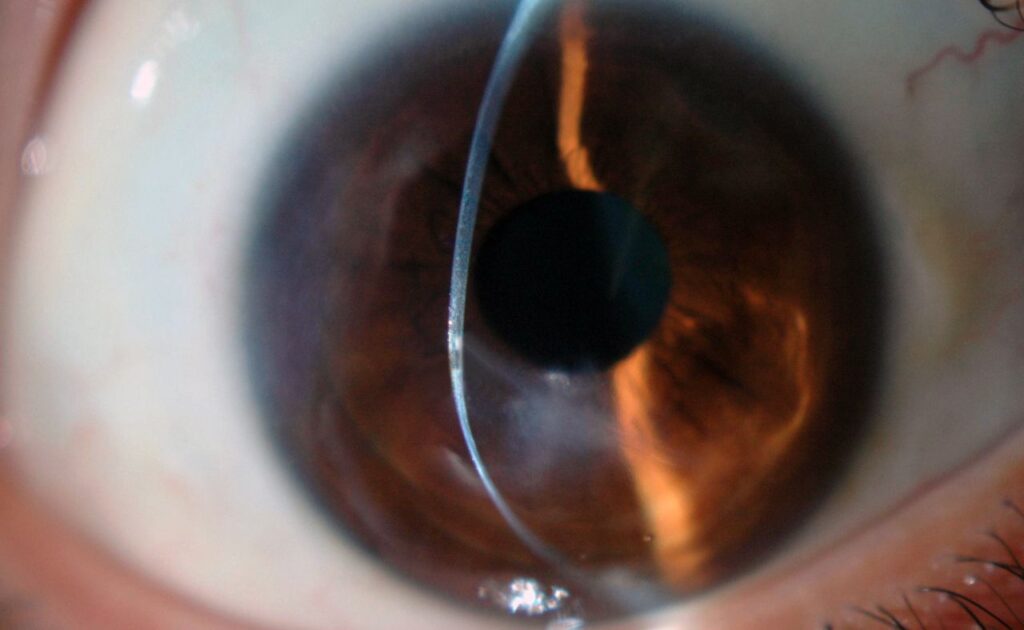
A “rare” eye disease, the main cause of corneal transplants in young people
Keratoconus, a pathology that deforms the cornea and affects 1 in every 2,000 people, is the “rare” eye disease most frequently treated at the Miranza clinics – with around 2,500 patients seen in the last 5 years at the group’s two largest centres, Vissum and IMO Grupo Miranza – and represents the leading cause of corneal transplants among young people.
Around 75% of patients with this disease are diagnosed before the age of 25, whereas the younger the age of onset of the disease, the higher the risk of it progressing and becoming more aggressive. These severe, progressive cases may require transplant surgery, when the increase in the cornea’s curvature causes a loss of vision that cannot be corrected with glasses or contact lenses.
Keratoconus prevention
However, Miranza’s specialists warn that many cases of corneal transplant could be avoided with an early diagnosis of the disease, which is key to applying less invasive treatments, such as the keratoconus surgery with cross-linking, which effectively stops keratoconus before it reaches advanced phases. They also recommend avoiding rubbing the eyes, which children and adolescents do with special virulence and which is an important risk factor for the disease, along with genetic factors, as it is a disease that often affects several members of the same family.
In the event of an incipient corneal alteration, the only way to detect it is by means of a comprehensive eye examination, including tests such as topography. Otherwise, keratoconus may go unnoticed, and patients may mistake it for an issue with their glasses prescription, “although a sudden appearance or increase in astigmatism is a clear sign of suspicion that should prompt a visit to the ophthalmologist,” explains Dr Jorge Alió, at Vissum Grupo Miranza.
Eye diseases that are not so rare
Along with keratoconus, another “rare” eye disease, but relatively common during a consultation at the Miranza centres, with around 2,000 patients seen since 2015 at the two reference clinics, is uveitis. This inflammation of the uvea or middle layer of the eye also generally affects young people (20 to 40 year olds) and is actually one of the main causes of blindness in working age in developed countries.
Dr Anniken Burés, at IMO Grupo Miranza, points out that uveitis has very different manifestations: “sometimes it is just an eye problem, whereas other cases are associated with diseases that affect the rest of the body. Moreover, it can occur acutely, usually with recurring episodes, or last for months or even years.” A pharmacological treatment is usually applied, which varies depending on the location and cause of the inflammation, although surgery may be necessary to manage complications associated with uveitis, which increases the risk of developing other eye disorders, such as glaucoma, retinal detachment, early cataracts, etc. Hence the importance of proper follow-up of these patients.
Benchmark centres
Going to centres with experience in the management of rare eye diseases allows us to provide more effective care for these diseases that are sometimes little known and for which it is difficult to compile clinical cases. Networking at the Miranza clinics, with more than 150 ophthalmologists sharing cases and knowledge, positions the group as a benchmark in diagnosis, treatment and research. This last pillar is especially relevant in cases such as hereditary retinal dystrophies, which currently have no cure and for which Miranza’s R&D&I Area, through the IMO Foundation, is developing genetic studies for future application of gene and cell therapies.
Retinal dystrophies are a highly heterogeneous group of diseases that usually start to show symptoms in adolescence and gradually degenerate the retinal cells, which are essential for vision. There are more than twenty different types of these dystrophies, whereas the number of patients is not negligible, if you add them up: around 3,500 have gone to the Miranza centres in Alicante and Barcelona in the last five years. Other rare diseases the group’s ophthalmologists provide specialised care for are corneal dystrophies (a thousand patients at both centres since 2015) and birth pathologies, such as congenital cataract (1,500 patients) or congenital glaucoma (over 800 patients).